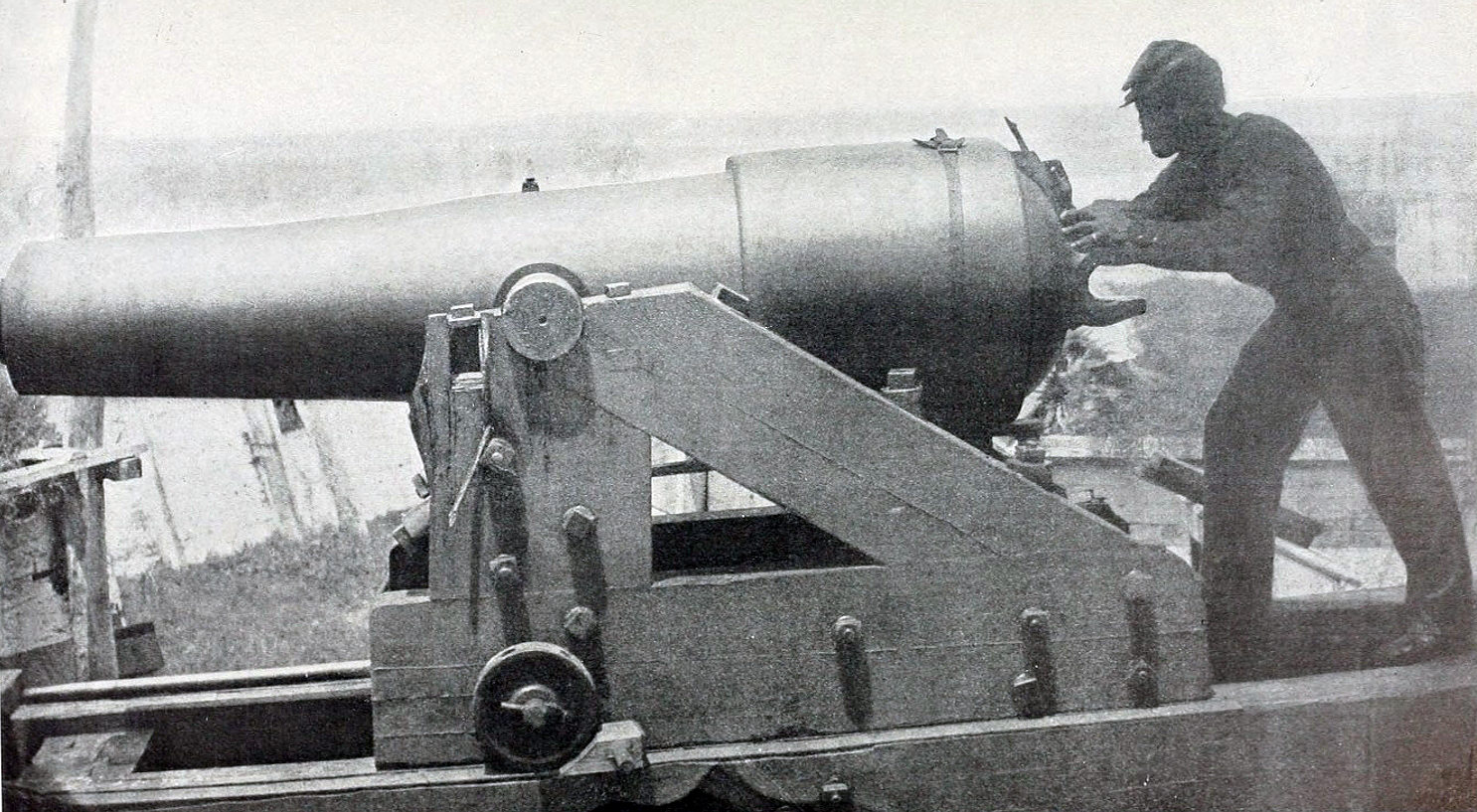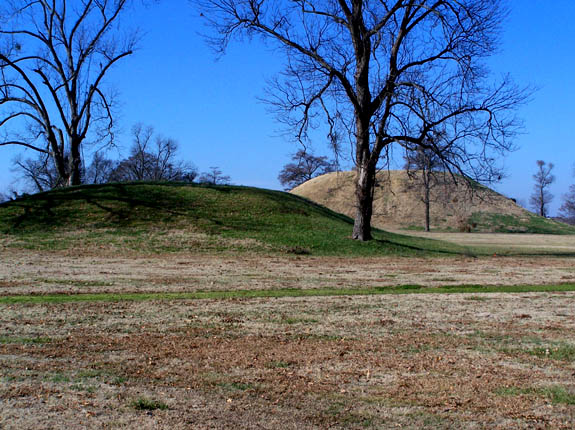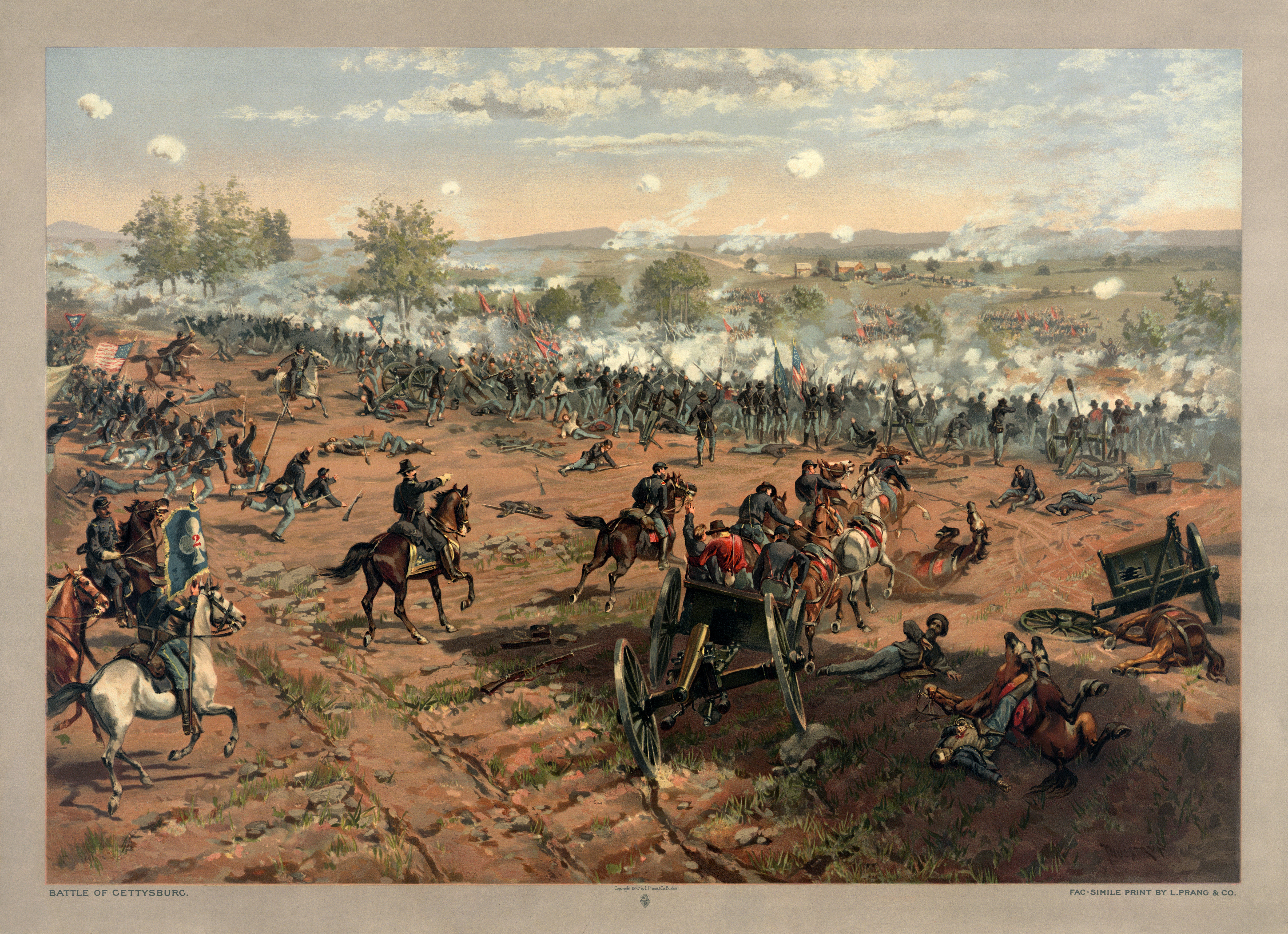|
Siege Of Vicksburg
The siege of Vicksburg (May 18 – July 4, 1863) was the final major military action in the Vicksburg campaign of the American Civil War. In a series of maneuvers, Union Major General Ulysses S. Grant and his Army of the Tennessee crossed the Mississippi River and drove the Confederate Army of Mississippi, led by Lieutenant General John C. Pemberton, into the defensive lines surrounding the fortress city of Vicksburg, Mississippi, leading to the successful siege and Confederate surrender. Vicksburg was the last major Confederate stronghold on the Mississippi River; therefore, capturing it completed the second part of the Northern strategy, the Anaconda Plan. When two major assaults against the Confederate fortifications, on May 19 and 22, were repulsed with heavy casualties, Grant decided to besiege the city beginning on May 25. After holding out for more than 40 days, with their supplies nearly gone, the garrison surrendered on July 4. The Vicksburg campaign's successfu ... [...More Info...] [...Related Items...] OR: [Wikipedia] [Google] [Baidu] |
Thure De Thulstrup
Thure de Thulstrup (born Bror Thure Thulstrup;April 5, 1848 – June 9, 1930) was an American illustrator with contributions for numerous magazines, including three decades of work for ''Harper's Weekly''.''Dictionary of Literary Biography'' (online edition)Thure de Thulstrup p. 1. He primarily illustrated historical military scenes. Early life and education Thulstrup was born in Stockholm, Sweden, on April 5, 1848. His father was Sweden's Secretary of the Swedish Navy, Navy amongst other such positions. After graduating from the Military Academy Karlberg, Royal Swedish Military Academy, Thulstrup joined the Swedish military as an artillery officer at the age of twenty. However, he soon left Sweden for Paris, where he joined the French Foreign Legion and saw service in the Franco-Prussian War.''Dictionary of Literary Biography'' (online ed.)Thure de Thulstrup p. 2. Thulstrup also served in the French colonial empire, French part of Northern Africa as a member of the Fi ... [...More Info...] [...Related Items...] OR: [Wikipedia] [Google] [Baidu] |
Anaconda Plan
The Anaconda Plan was a strategy outlined by the Union Army for suppressing the Confederacy at the beginning of the American Civil War. Proposed by Union General-in-Chief Winfield Scott, the plan emphasized a Union blockade of the Southern ports and called for an advance down the Mississippi River to cut the South in two. Because the blockade would be rather passive, it was widely derided by a vociferous faction of Union generals who wanted a more vigorous prosecution of the war and likened it to the coils of an anaconda suffocating its victim. The snake image caught on, giving the proposal its popular name. In the early days of the Civil War, Scott's proposed strategy for the war against the South had two prominent features. First, all ports in the seceding states were to be rigorously blockaded. Secondly, a strong column of perhaps 80,000 men should use the Mississippi River as a highway to thrust completely through the Confederacy. A spearhead, a relatively small amphibious ... [...More Info...] [...Related Items...] OR: [Wikipedia] [Google] [Baidu] |
Vicksburg Campaign April-July 1863
Vicksburg most commonly refers to: * Vicksburg, Mississippi, a city in western Mississippi, United States * The Vicksburg Campaign, an American Civil War campaign * The Siege of Vicksburg, an American Civil War battle Vicksburg is also the name of some places in the United States: * Vicksburg, Arizona * Vicksburg, Colorado, a ghost mining community listed on the National Register of Historic Places * Vicksburg, Florida, a ghost town * Vicksburg, Indiana * Vicksburg, Michigan * Vicksburg, Minnesota * Vicksburg, Mississippi ** Vicksburg National Military Park Vicksburg National Military Park preserves the site of the American Civil War Battle of Vicksburg, waged from March 29 to July 4, 1863. The park, located in Vicksburg, Mississippi, flanking the Mississippi River, also commemorates the greater ... * Vicksburg, Missouri * Vicksburg, Blair County, Pennsylvania * Vicksburg, Union County, Pennsylvania Vessels * USS ''Vicksburg'', several warships {{disambig, g ... [...More Info...] [...Related Items...] OR: [Wikipedia] [Google] [Baidu] |
Louisiana
Louisiana ( ; ; ) is a state in the Deep South and South Central regions of the United States. It borders Texas to the west, Arkansas to the north, and Mississippi to the east. Of the 50 U.S. states, it ranks 31st in area and 25th in population, with roughly 4.6 million residents. Reflecting its French heritage, Louisiana is the only U.S. state with political subdivisions termed parishes, which are equivalent to counties, making it one of only two U.S. states not subdivided into counties (the other being Alaska and its boroughs). Baton Rouge is the state's capital, and New Orleans, a French Louisiana region, is its most populous city with a population of about 363,000 people. Louisiana has a coastline with the Gulf of Mexico to the south; a large part of its eastern boundary is demarcated by the Mississippi River. Much of Louisiana's lands were formed from sediment washed down the Mississippi River, leaving enormous deltas and vast areas of coastal marsh a ... [...More Info...] [...Related Items...] OR: [Wikipedia] [Google] [Baidu] |
Texas
Texas ( , ; or ) is the most populous U.S. state, state in the South Central United States, South Central region of the United States. It borders Louisiana to the east, Arkansas to the northeast, Oklahoma to the north, New Mexico to the west, and has Mexico-United States border, an international border with the Mexican states of Chihuahua (state), Chihuahua, Coahuila, Nuevo León, and Tamaulipas to the south and southwest. Texas has Texas Gulf Coast, a coastline on the Gulf of Mexico to the southeast. Covering and with over 31 million residents as of 2024, it is the second-largest state List of U.S. states and territories by area, by area and List of U.S. states and territories by population, population. Texas is nicknamed the ''Lone Star State'' for its former status as the independent Republic of Texas. Spain was the first European country to Spanish Texas, claim and control Texas. Following French colonization of Texas, a short-lived colony controlled by France, Mexico ... [...More Info...] [...Related Items...] OR: [Wikipedia] [Google] [Baidu] |
Arkansas
Arkansas ( ) is a landlocked state in the West South Central region of the Southern United States. It borders Missouri to the north, Tennessee and Mississippi to the east, Louisiana to the south, Texas to the southwest, and Oklahoma to the west. Its name derives from the Osage language, and refers to their relatives, the Quapaw people. The state's diverse geography ranges from the mountainous regions of the Ozark and Ouachita Mountains, which make up the U.S. Interior Highlands, to the densely forested land in the south known as the Arkansas Timberlands, to the eastern lowlands along the Mississippi River and the Arkansas Delta. Previously part of French Louisiana and the Louisiana Purchase, the Territory of Arkansas was admitted to the Union as the 25th state on June 15, 1836. Much of the Delta had been developed for cotton plantations, and landowners there largely depended on enslaved African Americans' labor. In 1861, Arkansas seceded from the United St ... [...More Info...] [...Related Items...] OR: [Wikipedia] [Google] [Baidu] |
Trans-Mississippi Theater Of The American Civil War
The trans-Mississippi theater of the American Civil War was the scene of the major military operations west of the Mississippi River. The area is often thought of as excluding the states and territories bordering the Pacific Ocean, which formed the Pacific coast theater of the American Civil War (1861–1865). The campaign classification established by the National Park Service of the United States Department of the Interior, U.S. Department of the Interior is more fine-grained than the one used in this article. Some minor NPS campaigns have been omitted and some have been combined into larger categories. Only a few of the 75 major battles the NPS classifies for this theater are described. Boxed text in the right margin show the NPS campaigns associated with each section. Activity in this theater in 1861 was dominated largely by the Missouri in the American Civil War, dispute over the status of the border state of Missouri. The Missouri State Guard, allied with the Confederacy, ... [...More Info...] [...Related Items...] OR: [Wikipedia] [Google] [Baidu] |
Turning Point Of The American Civil War
The turning point of the American Civil War was a military victory or other development after which it seems certain that the Union (American Civil War), Union would prevail. While there is no unanimity as to which battle or development constituted the American Civil War, Civil War's turning point, the victory of the Union army in the Battle of Gettysburg, fought over three days from July 1 to July 3, 1863 in and around Gettysburg, Pennsylvania, followed immediately by the July 4th Union victory in the siege of Vicksburg on the Mississippi River is often cited as the Civil War's turning point. Several other decisive battles and events throughout the war have also been proposed as turning points. This list includes a chronological listing of the military developments sometimes cited as turning points in the war and the associated arguments in support of their respective roles as turning points in the war. The list includes battle victories by the military forces of the Confederate ... [...More Info...] [...Related Items...] OR: [Wikipedia] [Google] [Baidu] |
George Meade
George Gordon Meade (December 31, 1815 – November 6, 1872) was an American military officer who served in the United States Army and the Union army as Major General in command of the Army of the Potomac during the American Civil War from 1863 to 1865. He fought in many of the key battles of the Eastern theater and defeated the Confederate Army of Northern Virginia led by General Robert E. Lee at the Battle of Gettysburg. He was born in Cádiz, Spain, to a wealthy Philadelphia merchant family and graduated from the United States Military Academy in 1835. He fought in the Second Seminole War and the Mexican–American War. He served in the United States Army Corps of Topographical Engineers and directed construction of lighthouses in Florida and New Jersey from 1851 to 1856 and the United States Lake Survey from 1857 to 1861. His Civil War service began as brigadier general with the Pennsylvania Reserves, building defenses around Washington D.C. He fought in the Penins ... [...More Info...] [...Related Items...] OR: [Wikipedia] [Google] [Baidu] |
Battle Of Gettysburg
The Battle of Gettysburg () was a three-day battle in the American Civil War, which was fought between the Union and Confederate armies between July 1 and July 3, 1863, in and around Gettysburg, Pennsylvania. The battle, won by the Union, is widely considered the Civil War's turning point, leading to an ultimate victory of the Union and the preservation of the nation. The Battle of Gettysburg was the bloodiest battle of both the Civil War and of any battle in American military history, claiming over 50,000 combined casualties. Union Major General George Meade's Army of the Potomac defeated attacks by Confederate General Robert E. Lee's Army of Northern Virginia, halting Lee's invasion of the North and forcing his retreat.A prior attempt by Lee to invade the north culminated in the Battle of Antietam and 23,000 casualties, the most of any single day Civil War.Rawley, p. 147; Sauers, p. 827; Gallagher, ''Lee and His Army'', p. 83; McPherson, p. 665; Eicher, p. 550. Gal ... [...More Info...] [...Related Items...] OR: [Wikipedia] [Google] [Baidu] |
Robert E
The name Robert is an ancient Germanic given name, from Proto-Germanic "fame" and "bright" (''Hrōþiberhtaz''). Compare Old Dutch ''Robrecht'' and Old High German ''Hrodebert'' (a compound of '' Hruod'' () "fame, glory, honour, praise, renown, godlike" and ''berht'' "bright, light, shining"). It is the second most frequently used given name of ancient Germanic origin.Reaney & Wilson, 1997. ''Dictionary of English Surnames''. Oxford University Press. It is also in use as a surname. Another commonly used form of the name is Rupert. After becoming widely used in Continental Europe, the name entered England in its Old French form ''Robert'', where an Old English cognate form (''Hrēodbēorht'', ''Hrodberht'', ''Hrēodbēorð'', ''Hrœdbœrð'', ''Hrœdberð'', ''Hrōðberχtŕ'') had existed before the Norman Conquest. The feminine version is Roberta. The Italian, Portuguese, and Spanish form is Roberto. Robert is also a common name in many Germanic languages, including En ... [...More Info...] [...Related Items...] OR: [Wikipedia] [Google] [Baidu] |
Nathaniel P
Nathaniel is an English variant of the biblical Hebrew name Nathanael. It can be a given or surname. People with the name Nathaniel Given name * Nathaniel Archibald (1952–2018), American basketball player * Nate Archibald (born 1948), American basketball player * Nathaniel Ayers (born 1951), American musician who is the subject of the 2009 film '' The Soloist'' * Nathaniel Bacon (1647–1676), Virginia colonist who instigated Bacon's Rebellion * Nathaniel P. Banks (1816–1894), American politician and American Civil War General * Nat Bates (born 1931), two-term mayor of Richmond, California * Nathaniel Bowditch (1773–1838), American mathematician, father of modern maritime navigation * Nathaniel Buzolic (born 1983), Australian actor * Nathaniel Chalobah (born 1994), English footballer * Nathaniel Clayton (1833–1895), British politician * Nat King Cole (1919–1965), American singer and musician * Nathaniel Clyne (born 1991), English footballer * Nathaniel W. De ... [...More Info...] [...Related Items...] OR: [Wikipedia] [Google] [Baidu] |





